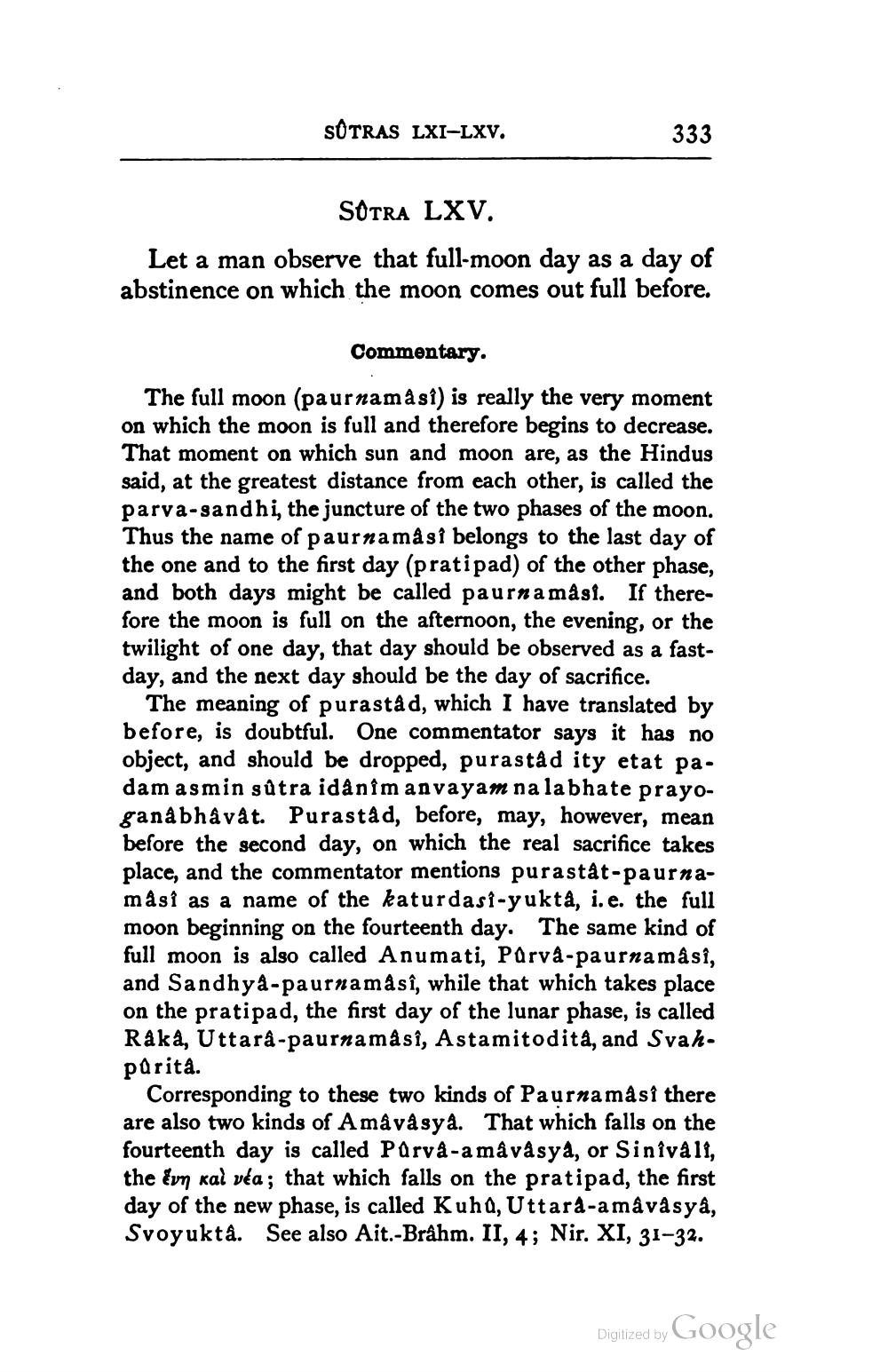________________
SOTRAS LXI-LXV.
333
SOTRA LXV. Let a man observe that full-moon day as a day of abstinence on which the moon comes out full before.
Commentary.
The full moon (paurnamasi) is really the very moment on which the moon is full and therefore begins to decrease. That moment on which sun and moon are, as the Hindus said, at the greatest distance from each other, is called the parva-sandhi, the juncture of the two phases of the moon. Thus the name of paurnamasi belongs to the last day of the one and to the first day (pratipad) of the other phase, and both days might be called paurna måst. If therefore the moon is full on the afternoon, the evening, or the twilight of one day, that day should be observed as a fastday, and the next day should be the day of sacrifice.
The meaning of puraståd, which I have translated by before, is doubtful. One commentator says it has no object, and should be dropped, purastad ity etat pa. dam asmin sutra idanimanvayam na labhate prayoganâbhâvât. Purastad, before, may, however, mean before the second day, on which the real sacrifice takes place, and the commentator mentions puraståt-pa urna måsî as a name of the katurdasi-yukta, i.e. the full moon beginning on the fourteenth day. The same kind of full moon is also called Anumati, Parva-paurnamasi, and Sandhya-paurnamàsî, while that which takes place on the pratipad, the first day of the lunar phase, is called Raka, Uttara-paurnamàsî, Astamitodita, and Syahparita.
Corresponding to these two kinds of Paurnamasî there are also two kinds of Amavasya. That which falls on the fourteenth day is called Parvå-a må väsya, or Sinivali, the &vn kal véa; that which falls on the pratipad, the first day of the new phase, is called Kuha, Uttard-amâväsyä, Svoyukta. See also Ait.-Brâhm. II, 4; Nir. XI, 31-32.
Digitized by Google




